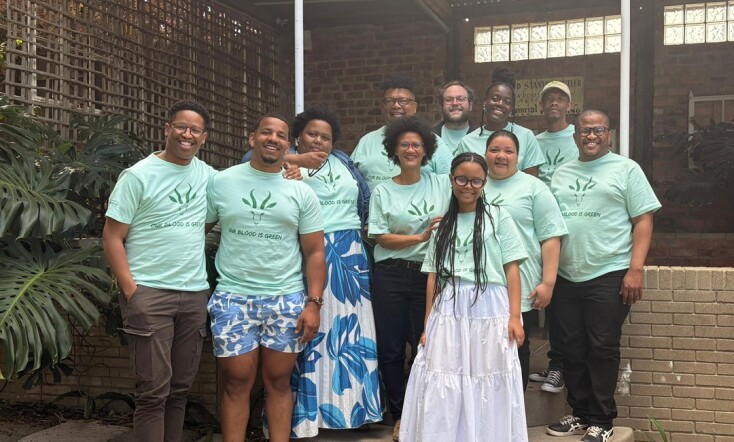Agriculture rarely makes global headlines, except during crises such as drought, policy disputes and labour unrest. For years, this was also true of South African agriculture. But for Ivor Price and his co-founder, Kobus Louwrens, what seemed like the norm needed a fresh look.
In late 2018, they launched Food For Mzansi with a clear and urgent purpose: “to make agriculture accessible and aspirational to younger audiences, especially black professionals, and anyone who eats food, which is all of us”, says Price. Together, they aimed to shift the spotlight to ordinary people doing extraordinary things in farming and agri-business.
“We knew there were countless ‘unsung heroes’ whose stories could inspire both farmers and everyday South Africans to see agriculture not as a relic, but as a space of innovation, hope and resilience,” says Price.
From the outset, Price and Louwrens resisted calling Food For Mzansi a media company. Instead, they described it as an “initiative”, a word that captured their ambition not just to report on agriculture but to build a movement around it. The goal was connection, not coverage.
What emerged was a media model that defied traditional labels. Rooted in journalism, Food For Mzansi now operates as a multi-platform agricultural media network and community-building organization. Its work spans news, podcasts, newsletters, social campaigns, events and training programs, all designed to bridge the rural-urban divide and build trust across the food value chain.
This evolution shaped not just how the team works, but how the organization sustains itself. Advertising and sponsorship are just one part of the revenue mix. FFM also generates income through thought-leadership partnerships and knowledge products like farmworker development programs.
This broader self-definition brought strategic clarity. “We stopped thinking of ourselves as just ‘publishing stories’ and began seeing ourselves as facilitators of conversation, trust, and learning,” says Price. “That has made our journalism more participatory and our brand far more resilient.”
Despite its growth, Food For Mzansi faced challenges familiar to many mission-driven media organizations. Without legacy infrastructure or a commercial roadmap, early success was fueled by editorial passion and community trust, but those alone weren’t enough to scale.
Sales processes were still relationship-driven and lacked the structure needed for sustainability. Pricing didn’t always reflect the value of the work. And while the team had momentum, it lacked the data systems to turn audience engagement into insight.
Recognizing this, MDIF’s Media Advisory Services brought in Revenue Expert-in-Residence Adriana Peña Johansson to work closely with the team. The timing was critical. With a strong editorial identity in place, the organization was ready to formalize its business operations.
One of the key shifts was building a stronger data discipline. The team learned to track and analyze audience behaviour more precisely, not just collecting numbers but using them to guide strategy. This meant aligning editorial calendars with commercial opportunities and creating a structured pipeline for advertising and partnerships.
“We realised we needed to formalize our pipeline management, integrate better data tools, and build a system that could scale without losing the personal touch that makes Food For Mzansi unique,” Price explains.
Another breakthrough came with pricing and packaging. Like many independent outlets, Food For Mzansi had underpriced its offerings due to its social mission. The revenue mentorship reframed this mindset. “Impact and profitability are not opposites,” Price reflects. “They can reinforce each other when managed strategically.”
The support helped unlock growth without compromising values. What began as an initiative is now on its way to becoming a resilient media organization with a clear path to long-term sustainability.
For younger versions of Ivor and Kobus building media and information ventures today, Price offers clear advice: don’t separate your passion from your business plan.
“The media founders of the future must be just as obsessed with revenue architecture as they are with storytelling craft,” he says. “Build your product and your sales strategy in tandem. Don’t treat revenue as something that happens after your launch. It has to be embedded from day one.”
